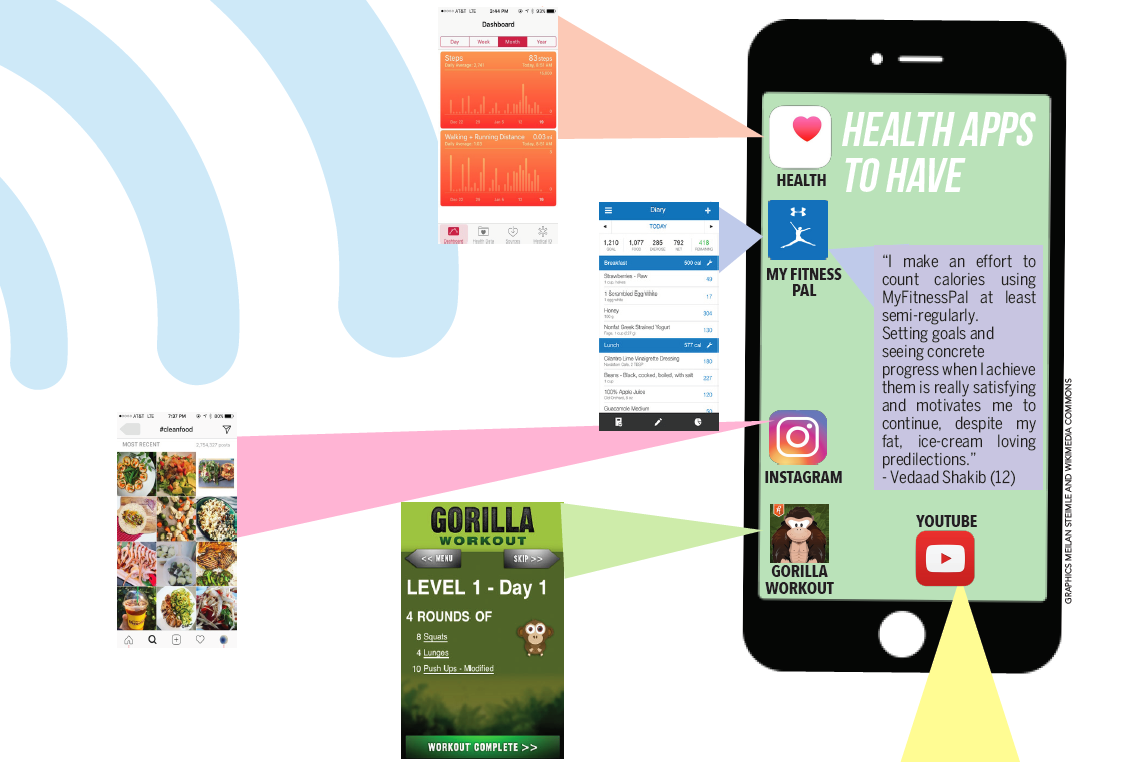Plugged into fitness online
Fit For a King: Technological fitness tools provide new ways to improve physical health
January 25, 2017
The Information Age has changed the way humans live. From the development of mobile phones to the creation of the Internet and its plethora of websites, people with access to technology can use methods of communication that are drastically different from our ancestors’.
With the evolution of the digital world has also come the rising popularity of the online fitness community. Health-focused apps, blogs and social media accounts have become popular tools for individuals looking to better their physical health, while people wishing for a more nutritious diet can look up recipe blogs or informational YouTube videos instead of visiting a nutritionist.
At the upper school, both students and faculty make use of technological devices to stay healthy. Varsity girls basketball player Akhila Ramgiri (10) has experience with the calorie- and weight-tracking app MyFitnessPal.
“You could type in the amount of time you spent doing a certain exercise, and it’ll calculate how many calories you would have burned. If you stick to calorie counts, it’s pretty easy to keep track of your fitness,” Akhila said. “I stopped a couple years ago, mostly because after I used it, I didn’t really need the app to help me keep track, because I was at my goal weight anyways.”
As fitness technology improves, the historical design trend of making items smaller and more portable has begun to affect the online wellness field. Accordingly, smaller fitness monitors such as the Fitbit wristband have recently taken center stage
“I’m definitely aware of the fact that I need to have certain steps; when [my Fitbit] goes off and buzzes, I’m really happy. It really makes me think, ‘Oh, I have accomplished my goal of the day,’” math teacher Gabriele Stahl said. “What motivated me to get the Fitbit is really the wellness program here at Harker, [which states that] if you fulfill certain requirements, you get a discount on your health insurance.”
The upper school’s athletics requirement of two physical education credits before graduation also opens many opportunities for students to explore fitness options at school.
“I think that athletics are an important part of the traditional American high school experience, and I think that it is something that contributes to a well balanced graduate and alumni,” Andrew Irvine, chemistry teacher and assistant lacrosse coach, said. “There are some things that you learn on the lacrosse field that you will never learn in the chemistry classroom.”
More than 60 percent of students participated in a school sports team during the last school year; those not interested in competitive athletics can sign up for after school yoga and capoeira classes, both of which earn their participants 0.5 of a credit per semester.
Certain performing arts activities also earn students physical education credit: dance production performers, after school dance class participants and members of Downbeat, junior varsity and varsity dance all gain credits at the end of their activity’s performance season.
“I think Harker has a pretty good sports offering. Obviously, based on the size of our school, we don’t have as many sports as other schools, and our teams aren’t as big as other schools’,” varsity boys water polo team captain Arnav Tandon (12) said. “I think most of the people who play a sport and want to play for the school have the opportunity to, and if they don’t then, that’s a personal choice that they make.”
Even as technology has improved in leaps and bounds over the last few decades, the health of our bodies still defines our ability to interact with the material world—and our fitness, whether technologically assisted or not, plays a large role in all of our lives.



